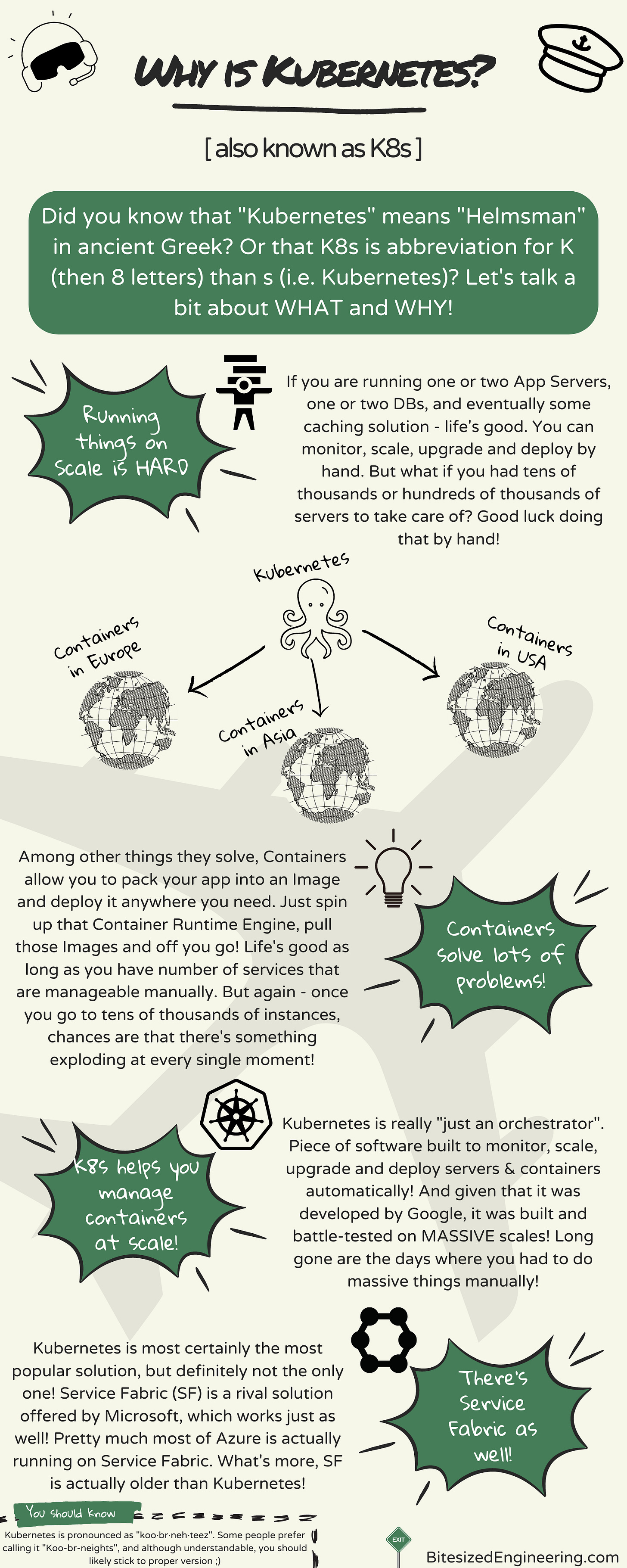What and Why is Kubernetes (K8s)?
Chronicles of Containers - Part 12
Hi there! 👋
Another day and another text on Containers. But this time I want to give you a bit of a glimpse of Kubernetes and which problem does it solve. This is not a deep-dive into it, but more of an overview ;)
As usual - we go with the bite-sized infographic first and then with more details.
(click on image to expand)
I believe that, so far, the infographic gave you some idea. Containers are considered as a “way to go”, especially on Cloud Apps, but one huge problem isthe management and orchestration, especially on larger scale (think thousand or hundred thousand containers). And what I mean by management and orchestration is - controlling the health state, starting/stopping them when needed, doing failovers if things go wrong, etc. Just like any other thing, Containers can and will go wrong and someone needs to keep track of that.
That’s where Orchestrators come into place. Tools built with the sole purpose of making sure that your fleet of Containers works as expected. And that’s exactly where Kubernetes joins the party.
Kubernetes is by no means the only solution. I clearly remember Docker Swarm being a thing at one point. What’s more, according to Cloud Native Foundation Landscape, there are over twenty orchestration solutions out there at this moment:

However, Kubernetes seems to be the most popular and widely adopted one. It does help it was released by Google. And to tell you the truth, with the exception of Azure Service Fabric, I haven’t even heard of others.
Personally, I never tried K8s before. But I am thinking of doing a deep-dive series eventually. From what I’ve gathered though - most of the complexity comes from the fact that there’s plethora of things you can attach to your clusters and do all kinds of crazy things with. But again - that’s likely a story for another time. For now, I hope you’ve got the essence of it - Kubernetes is a Pilot for your fleet of Containers.
Oh, and I almost forgot - AKS, EKS, and GKE stand for Azure Kubernetes Service (Microsoft), Elastic Kubernetes Service (AWS) and Google Kubernetes Engine. They are Kubernetes offerings from major cloud providers ;)
And that’s about it for today! Future articles will deal with what Container Runtime Engine is, how Images are distributed and how Docker fits into this whole story. Until then, if you learned something new, I’d appreciate if you share to this article and subscribe if you haven’t already :)
Other articles in the series:


